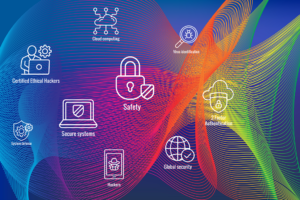Cyber attacks leave victims seeking justice and answers. Many wonder if hiring a hacker to trace cybercriminals works. In this guide, we explain key concepts, methods, and legal boundaries. You’ll learn how ethical hackers support attribution, and when you need law enforcement. By the end, you’ll know whether hiring a hacker to trace cybercriminals makes sense.
Understanding Hacker-Assisted Attribution: Hiring a Hacker to Trace Cybercriminals
Hacker-assisted attribution combines technical forensics with intelligence gathering. Ethical hackers apply deep packet inspection, log analysis, and threat intelligence feeds. They map attacker infrastructure, trace IP hops, and correlate malware samples. This process helps answer who, when, and how of an intrusion. When considering hiring a hacker to trace cybercriminals, you tap into these advanced capabilities.
How Ethical Hackers Help Trace Cybercriminals
Ethical hackers follow proven workflows to trace attackers:
-
Initial Reconnaissance
They scan public records, domain registrations, and paste sites. -
Forensic Data Collection
They acquire disk images and memory dumps under strict chain of custody. -
Log Correlation
They parse firewall, server, and application logs for indicators of compromise. -
Threat Intelligence Integration
They cross-reference IOCs with databases like FBI IC3. -
Malware Analysis
They reverse-engineer payloads to identify unique signatures.
These steps illustrate how hiring a hacker to trace cybercriminals can yield actionable leads.
How to Remove Leaked Data Online (Legally and Effectively)
Steps for Hiring a Hacker to Trace Cybercriminals
Follow this roadmap when you decide to hire a hacker to trace cybercriminals:
-
Define Scope and Goals
Outline what systems and breaches you need investigated. -
Verify Credentials
Insist on CEH, OSCP, or GIAC certifications. -
Sign a Clear Contract
Document legal boundaries, deliverables, and confidentiality terms. -
Engagement Kickoff
Provide forensic copies of affected systems and logs. -
Regular Reporting
Request interim findings to adjust strategy as needed. -
Final Report & Handover
Ensure you receive a detailed report with timelines and evidence.
This structured approach helps you maximize value when hiring a hacker to trace cybercriminals.
Legal Constraints on Hiring a Hacker to Trace Cybercriminals
Even ethical hackers face strict legal limits. They cannot hack systems they don’t own or control. They must avoid violating the Computer Fraud and Abuse Act (CFAA). In many jurisdictions, only law enforcement can subpoena server logs or compel data releases. Ethical hackers can advise on evidence gathering but cannot replace police powers. Before hiring a hacker to trace cybercriminals, consult your legal counsel.
Challenges and Risks of Hiring a Hacker to Trace Cybercriminals
-
False Attribution
Attackers use proxy servers, VPNs, and bulletproof hosting to hide tracks. -
Chain of Custody Issues
Mishandled evidence can weaken legal cases. -
Cost Considerations
Deep attribution investigations can run tens of thousands in fees. -
Data Privacy Concerns
Handling personal data carries compliance obligations under GDPR or CCPA.
Understanding these risks ensures you set realistic expectations when hiring a hacker to trace cybercriminals.

When to Involve Law Enforcement
When to Involve Law Enforcement
Ethical hackers can gather leads, but only law enforcement can enforce subpoenas and make arrests. Report serious breaches to agencies like the FBIIC3 or your local Cyber Crime Unit. Collaboration between your hired hacker and investigators can speed up investigations. This partnership balances technical prowess with legal authority.
Integrating Ethical Hacking with Incident Response
Combining breach tracing with robust incident response boosts outcomes. Our How Our Ethical Hacking Services Work article outlines the full lifecycle from testing to post-incident review. By aligning threat tracing with response plans, you close gaps faster and learn lessons to prevent future attacks.
Case Study: Tracing a Ransomware Operator
A mid-sized firm faced a Ryuk ransomware attack. After containment, they hired an ethical hacker team. The team:
-
Retrieved encrypted logs from affected servers.
-
Analyzed network flows to identify C2 servers.
-
Cross-checked with open-source intelligence on criminal forums.
-
Mapped cryptocurrency transactions to clustering wallets.
Within three weeks, the client secured actionable clues and provided them to the FBI. They also strengthened their defences based on post-incident findings.
Best Practices When Hiring a Hacker to Trace Cybercriminals
-
Maintain Transparency
Keep stakeholders informed of findings and next steps. -
Document Everything
Timestamp all actions and record evidence handling. -
Align with Compliance
Follow GDPR, HIPAA, or PCI-DSS as needed for data privacy. -
Plan Remediation
Use findings to patch vulnerabilities and update security policies. -
Review Lessons Learned
Conduct post-mortems to improve future responses.
Adopting these practices enhances your chance of success when hiring a hacker to trace cybercriminals.
Conclusion: Is Hiring a Hacker to Trace Cybercriminals Right for You?
Hiring a hacker to trace cybercriminals can reveal attacker identities and strengthen legal cases. Ethical hackers use forensics, threat intelligence, and malware analysis to attribute attacks. Yet they face legal boundaries and technical obstacles. Always pair their work with law enforcement and a solid incident response plan. With clear scope, certified experts, and structured workflows, you can gain valuable insights into cyber threats. Evaluate your needs carefully, then decide if hiring a hacker to trace cybercriminals aligns with your objectives.
—



No responses yet